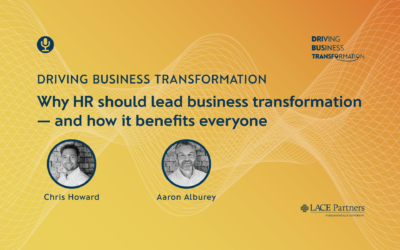We are often asked by clients or HR teams in our community about benchmarking and specifically about providing data on how HR teams are performing in their ‘space’. Today’s blog is an overview of some of the key considerations that teams should be thinking of when looking at when considering measuring themselves against other organisations. We explore the value of benchmarking, some of the challenges of not being clear on what you are benchmarking, as well as how it can be beneficial. Ultimately we want to help answer the question: Is it our friend or our foe?
Why do we need benchmarking?
Before making any decision about whether you should, or what you should, benchmark, you need to ask yourself the ‘why?’ What are you trying to achieve and what are you going to use the information you get for? That will define the nature of the benchmarking process that you go through.
What are the reasons we hear about why HR wants to undertake any benchmarking exercise? One of the most common reasons we come across is to build out a business case. Whether that is through a digital transformation in investing significant cost into changing systems, or perhaps changing the operating model to move to shared services, but to make that investment and agreement to proceed there will inevitably be scrutiny and so to be able to evidence your decision making by showing what other organisations have achieved then benchmarking can be valuable.
We also come across internal benchmarking i.e. being benchmarked against other functions because of a desire to reduce cost or improve efficiency. Or as a HR team you could wish to reflect on your direction of travel in terms of your people strategy and so you are looking for data points that will enable you to plot your trajectory and compare over time, the ‘stop and think’ moment, if you will.
The different types of benchmarking and their values
There are variables to think about when you are considering your approach to benchmarking: qualitative (how does our service offering compare to other organisations, or how our career progression opportunities compare, for example) or quantitative (cost of function as a proportion to the total business, or how many HR employees are required to service your full workforce, for example) and both have valuable and powerful insights that HR teams can and should leverage when benchmarking.
You also have internal vs external benchmarking. Externally across other businesses is valuable, but as we’ve also touched on above, across function or internally country-by-country can help you to reflect on any variations and look to see where you can improve efficiencies as a business.
Can you ever really compare your business with another?
Every business is different. They have their own complexities. You may have a business that you want to benchmark against that is in the same industry as you, but if they are a different size, have different geographic spans, provide slightly different services, can you ever truly ‘compare apples with apples’?
This is the cautionary tale when it comes to benchmarking and going back to the beginning of the blog and looking at what you want to get from your benchmarking is an important part. If you are looking at base data comparisons then you have your initial building blocks – size, scale and complexity of business, or geography, for example – can enable you to get benchmark information that is more relevant. Alternatively you can compare yourself to other HR functions that having similar operating models. If you already have a shared services function set up then you may wish to benchmark against other functions who also operate in the same way. The level of automation that you have in your business is a consideration as well. A business with a high degree of self service across the business in your HR functions then you need to think about comparing across other businesses that have already implemented a higher degree of self service as opposed to one that has a larger number of operational HR professionals to service the requirements of the business.
It all comes down to scope. If you want to compare ‘apples with apples’ and ‘pears with pears’ then you need to ensure that you have the right scope in place. If you take payroll for example; does it sit in HR or in finance? Have you outsourced major parts of your service provision and are the company you are benchmarking yourself against doing the same? Are you factoring in the costs of the outsourced provision when you are making the comparison? These are all important considerations; they all drive the relevance of the data that you are looking at.
Benchmarking can be valuable in challenging yourself (why are we in this quartile? Why are we different?) but as an HR Director you don’t want to be tied to a specific targeted outcome unless you are incredibly confident that the data you are using to set that target is very relevant to you. Use benchmarking as a way of setting a direction of travel rather than for a specific outcome.
If you would like to talk to us about your approach to benchmarking, if you want to refine how you use benchmarking or if you are looking at improving efficiencies in your business and you think benchmarking can help, please get in touch below:






